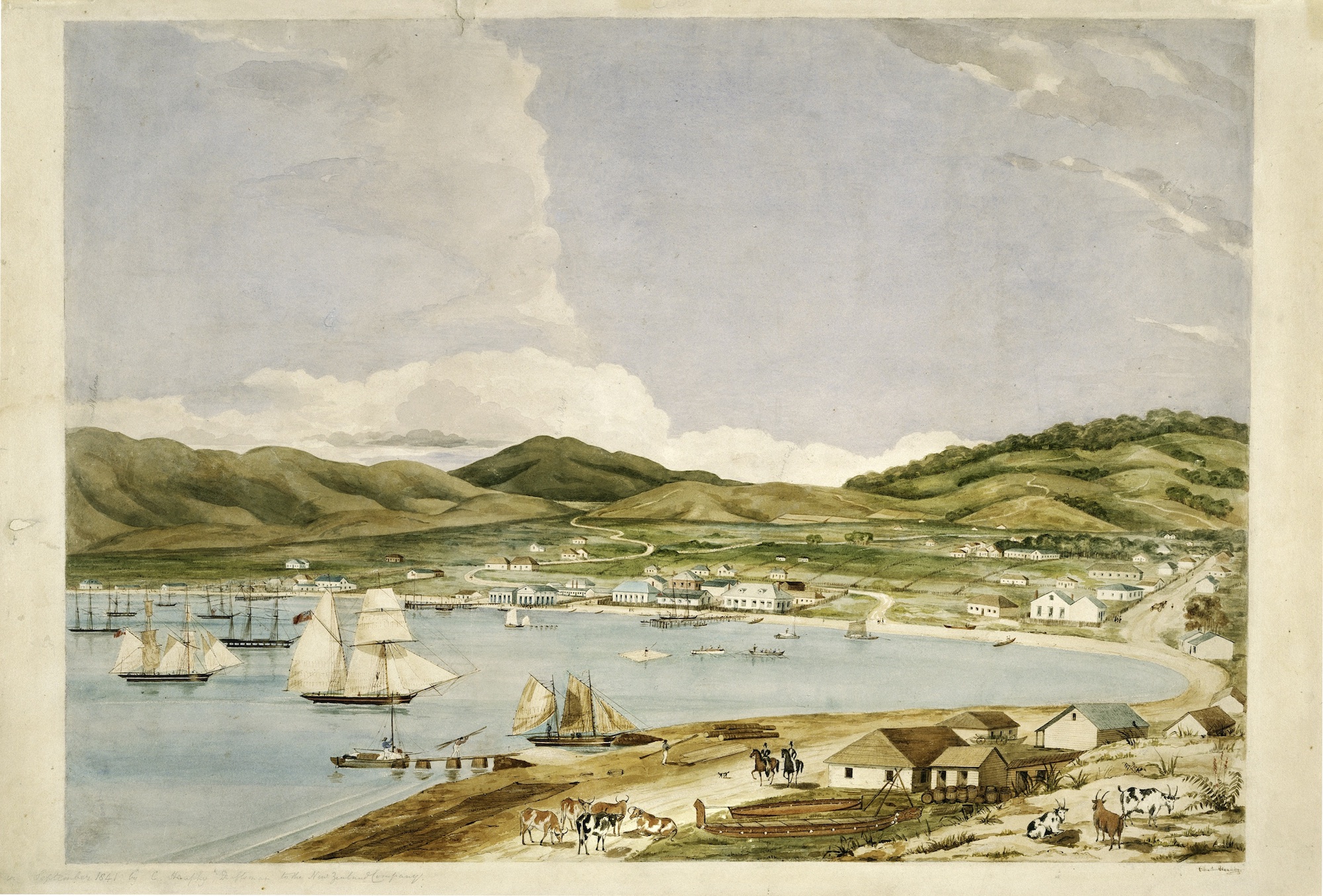
Heaphy’s painting is often paired with his scene from the same vantage point (painted several months earlier) looking north along the Lambton Quay shoreline towards Thorndon and the inner harbour. Together they probably still remain the best-known paintings of very early Wellington.
It was art with a promotional purpose. Heaphy was employed by the New Zealand Company, the speculative colonising enterprise that founded Wellington. Success depended on a steady flow of new settlers and Heaphy’s task was to present a pictorial view of Wellington as the perfect place for a new life. His watercolours were sent back to the company directors in England, published as lithographs and widely distributed.
Wellington is shown at its very best. The weather is balmy and windless. The hills are a little flatter and the harbour rather busier than was ever actually the case. Well-fed English farm animals graze contentedly in the foreground, while a respectable pair on horseback promenade gracefully down Willis Street. In the background a country road meanders through empty green meadows into the distance. It was an enticing scene for a prospective emigrant.
The following year, Heaphy’s book Narrative of a Residence in Various Parts of New Zealand upped the promotional ante. Everything about Wellington was good, especially compared with Auckland, which had “very little land for immediate use, as the island there is extremely narrow and the country very swampy”. Even the Wellington wind was praised, for bringing “extraordinary salubrity”.
Heaphy’s enthusiasm for Wellington was certainly genuine but, as his biographer Iain Sharp affectionately notes, some of his claims “are such blatant spin-doctoring he must surely have written them with tongue in cheek and eyes twinkling”.




